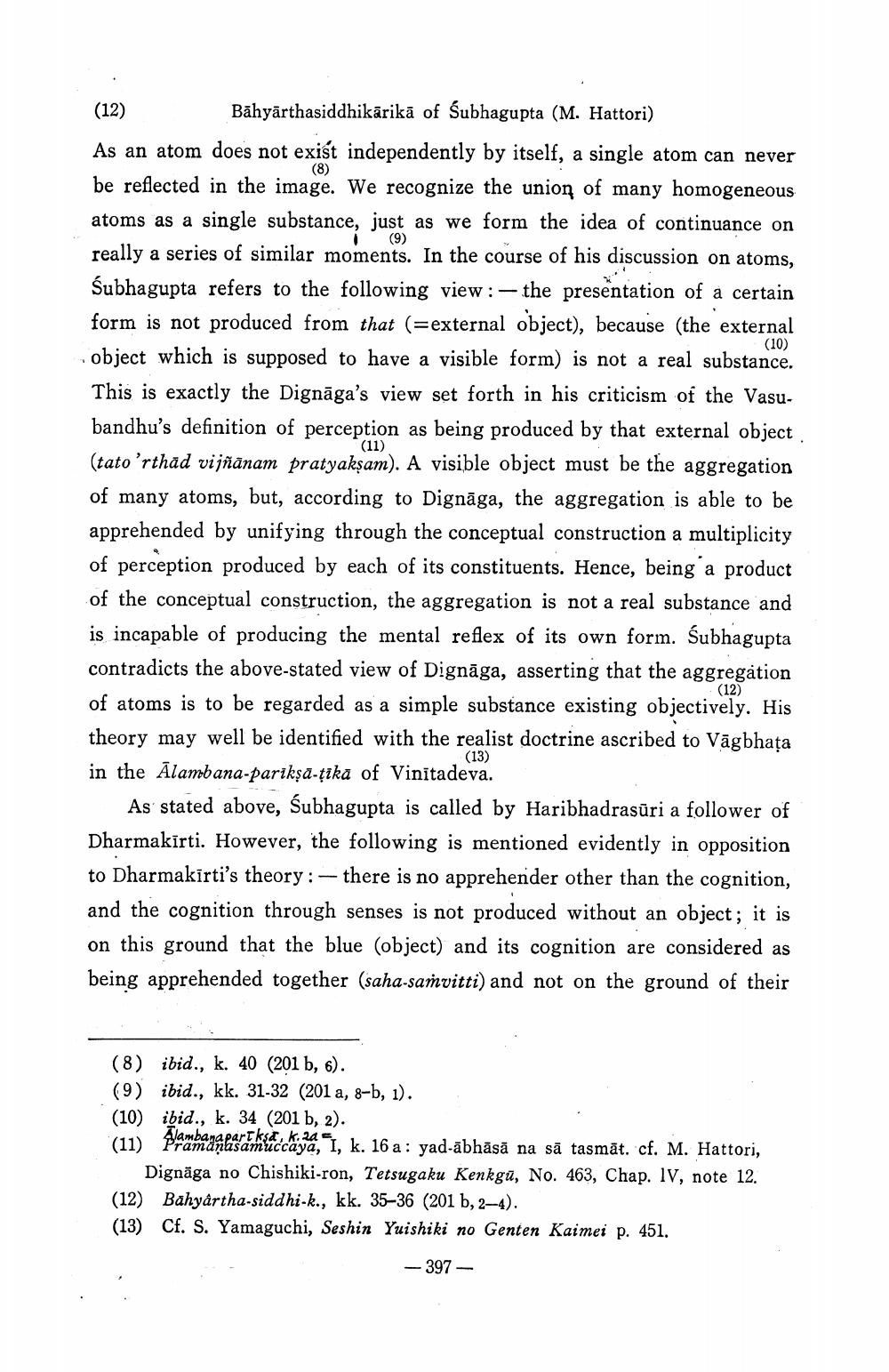________________
(8)
(9)
(10)
(11)
(12) Bāhyārthasiddhikārikā of Subhagupta (M. Hattori) As an atom does not exist independently by itself, a single atom can never be reflected in the image. We recognize the union of many homogeneous atoms as a single substance, just as we form the idea of continuance on really a series of similar moments. In the course of his discussion on atoms, śubhagupta refers to the following view :- the presentation of a certain form is not produced from that (=external object), because (the external object which is supposed to have a visible form) is not a real substance. This is exactly the Dignāga's view set forth in his criticism of the Vasubandhu's definition of perception as being produced by that external object (tato’rthad vijñānam pratyakşam). A visible object must be the aggregation of many atoms, but, according to Dignāga, the aggregation is able to be apprehended by unifying through the conceptual construction a multiplicity of perception produced by each of its constituents. Hence, being a product of the conceptual construction, the aggregation is not a real substance and is incapable of producing the mental reflex of its own form. śubhagupta contradicts the above-stated view of Dignāga, asserting that the aggregation of atoms is to be regarded as a simple substance existing objectively. His theory may well be identified with the realist doctrine ascribed to Vāgbhata in the Alambana-parikșa-țika of Vinītadeva.
As stated above, śubhagupta is called by Haribhadrasūri a follower of Dharmakīrti. However, the following is mentioned evidently in opposition to Dharmakīrti's theory: - there is no apprehender other than the cognition, and the cognition through senses is not produced without an object; it is on this ground that the blue (object) and its cognition are considered as being apprehended together (saha-samvitti) and not on the ground of their
(12)
(13)
(8) ibid., k. 40 (201 b, 6). (9) ibid., kk. 31-32 (201 a, 8-b, 1). (10) ibid., k. 34 (201 b, 2). (11) Pramanasamuccaya, I, k. 16 a: yad-ābhāsā na sā tasmāt. cf. M. Hattori,
Dignāga no Chishiki-ron, Tetsugaku Kenkgū, No. 463, Chap. IV, note 12. (12) Bahyartha-siddhi-k., kk. 35-36 (201 b, 2-4). (13) Cf. S. Yamaguchi, Seshin Yuishiki no Genten Kaimei p. 451.
- 397




